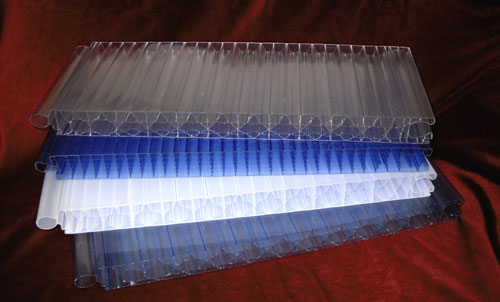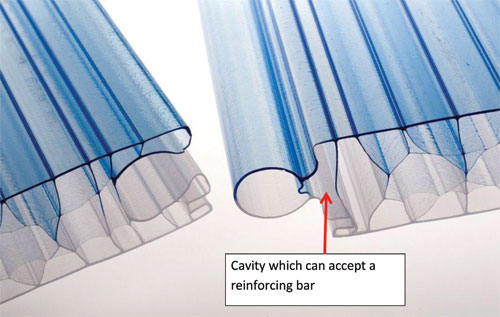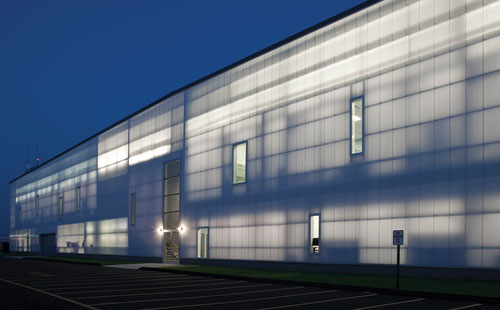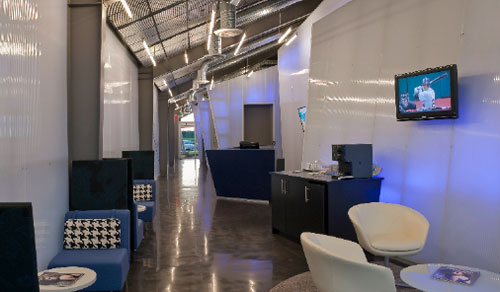Translucent Cellular Polycarbonate Delivers Design Versatility
Tongue and Groove
A tongue and groove profile is used for vertical walls, office dividers and industrial windows. Joints, which have no battens of any kind, create a visually uninterrupted wall. Tongue and groove panels are typically available in 40mm or 50mm thicknesses. Some panel configurations allow the insertion of steel bars, typically 3/16 in. x 1-1/4 in., and as long as the panel. These bars increase the spanning capability of the panels.
 |
|
Photo courtesy of EXTECH/Exterior Technologies, Inc. |
 |
PCSS tongue and groove profile provides a seamless connection with no protruding battens or caps. Photo courtesy of EXTECH/Exterior Technologies, Inc. |
Tongue and groove cellular polycarbonate panelsVolo Aviation at Igor I. Sikorsky Memorial Airport |
||
|
||
|
Designed by Beinfield Architecture PC of South Norwalk, Conn., Volo Aviation at Igor I. Sikorsky Memorial Airport, Stratford, Conn., is a facility for a jet leasing company. Among other functions, it is a hangar for jets. The design challenge was to provide a unique and affordable façade along the 270-ft by 38-ft front face of this typical pre-manufactured steel frame structure. A polycarbonate cladding system was selected that allows diffused natural light into the offices during the day and inverts the effect with internal lighting at night. The exterior PCSS cladding is a tongue and groove panel system that is highly impact resistant and has high thermal insulation properties. The panels come in 20-in. widths and maximum 39-ft lengths. They run vertically with an average height of 38 ft and are fixed to the horizontal steel girts of the pre-manufactured structure via special clips. These clips are designed to allow thermal movement of the panels. The polycarbonate systems manufacturer provided custom aluminum trim at the heads and sills of the polycarbonate facades. The trim also allows for the expansion and contraction of the polycarbonate wall system. The passenger waiting area is essentially a series of translucent polycarbonate interior partitions. The polycarbonate captures light from the LED light source and refracts it within its cells, giving the entire wall an ambient glow. |











